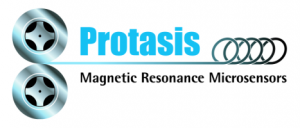Since 2005, Protasis Corporation has worked with several large pharmaceutical companies and ACD/Labs to develop departmental automation systems for Computer Automated Structure Verification/Elucidation (CASE) using NMR (and MS). More recently, we have deployed these same fluidic, robotic and software systems in the chemistry departments at several major universities. Why? We want to give your students access to the same modern tools that are accelerating discovery research in the real-world. Tools that acquire thousands of spectra per month and allow rapid confirmation so synthesis chemists can answer the age-old questions, “Did I Make What I Thought I Made?”, or, more simply, “What Is This Sample Made Of?” And these answers must be quick. Nobody likes to wait. Especially students.
Departmental automation designed to optimize large company workflows. ‘Big pharma’ needs more information. But, in industry, this search must be particularly time- and cost-effective. Companies like Pfizer, Merck, Novartis, Bristol-Myers and Amgen have automated their Medicinal Chemistry departments with Protasis to support dozens of synthesis chemists making hundreds of molecules each week. Our One-Minute NMR automation systems accept all of these samples in microplates (from libraries) or sealed vials (from walk-up). We automatically load each sample, run multiple experiments and interface seamlessly with ACD/Labs structure verification software. Then information-rich reports are emailed out to each user with hot-links to the match/purity scores and the raw spectra itself. Panoramic viewers allow zooming, panning, integrating and quantifying of your spectral data. These are the best tools for the most important problems in science. Check out our journal papers for some references from these active customers.
Now this same experience is available to your students. Dozens of graduate students at the prestigious BU-CMLD (Boston University Center for Chemical Methodology and Library Development) have used Protasis CapNMR probes and One-Minute NMR automation systems since 2008 to confirm their reactions. They deliberately scale down their syntheses to save money and time. They submit their samples in inexpensive plastic vials and walk away. This system uses a Varian 400 MHz NMR system. The system integrates with ACD/Labs software and everyone gets their results by email at their desk or dorm room as soon as their experiments are complete.
But does this work with undergraduates? We’re doing NMR automation now at the University of Illinois at Urbana-Champaign (UIUC) and the University of North Carolina at Greensboro (UNCG) in the organic chemistry teaching labs. At the University of Illinois at Urbana-Champaign (UIUC) starting in the 2010 fall term, 200 students submitted samples five times during Chem 235, their introductory laboratory course, for five different teaching experiments. That is a lot more NMR usage than we find in most teaching labs. At each school, the samples are processed in a few hours and the results were emailed to each student. Managing the ‘thundering herd’ couldn’t be easier.
More Information
Teaching Labs
Featured Speaker
Dr. Dean Olson, NMR Facility Manager
Our Customer Partner
University of Illinois (Urbana)
























